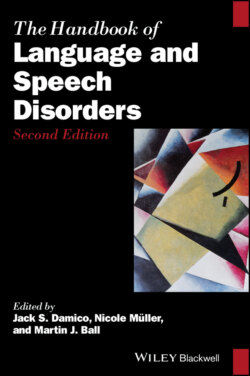Читать книгу The Handbook of Language and Speech Disorders - Группа авторов - Страница 32
2.5.1 Culture and Cultural Diversity
ОглавлениеCulture is “that complex whole that includes knowledge, belief, art, morale, laws, custom, and any other capabilities and habits acquired by humankind as members of society” (Tylor, 1970). Thus, cultural diversity includes race, ethnicity, national origin, age, gender (and gender identification), language, religion, presence of disability, literacy, and education, occupation, sexual orientation, geographic region, and socioeconomic status. When diverse cultures and even subcultures mingle, a number of different outcomes may emerge, as illustrated by theoretical models of acculturation and assimilation: conformity, melting pot, cultural pluralism (e.g., Battle, 2012). This, in turn, intensifies cultural and linguistic diversity in the individuals involved. Socioeconomic, historic, institutional, and linguistic barriers playing on acculturation/assimilation processes affect the level of people’s adaptation in social groups, which in practice translates into inequity in assessment and treatment, and disparity in clinical service provision. For instance, a monolingual Spanish‐speaking mother, seeking speech and language services for her bilingual Spanish–English child in a monolingual‐English clinical service provision, is unlikely to provide all the micro/macro background information necessary to assist in accurate diagnosis and intervention of the child’s speech and language delay, or other SLD, unless an interpreter or a bilingual service provider is employed.
Mahendra et al.’s (2004) metaphor, “Why is yogurt good for you,” pinpoints how live/living culture(s) sustain human wellness; however, communicating with people that are different may not necessarily be as effortless, especially given humanity’s biological setup to mistrust the strange or alien. Due to the nature of culture being itself multifaceted, cultural traits/characteristics are not absolutes but, on the contrary, controlled by assumptions, opinions, and beliefs that subsequently manifest as tendencies in people. The negative aspects of such tendencies are stereotyping, overgeneralization, and conscious or unconscious bias. These constructs have the potential to affect both speech language development in children and adults, as well as the efficacy of clinical care provision in resulting SLDs in terms of diagnosis, assessment, and therapy. Such constructs may also influence, even at the most basic level, an individual’s perception of disability (including diagnosing it as existing or not), whether that relates to one’s own disability or that of others.
Cultural dimensions have both a societal and an individual component. To provide a couple of examples, two such dimensions and their relation to clinical practice provision are:
1 The extent to which people in a society are integrated into groups (individualism/ collectivism); so a patient from an individualist society will be focused on self‐sufficiency and independence, and practitioners will need primarily to encourage a return to self‐care. On the other hand, individuals from a collectivist society will rely on ongoing support from care providers or family to return to a state of full recovery.
2 How values are distributed between the genders (masculine/feminine society); people from a masculine society, more so males than females, will be assertive and competitive, which translated into a clinical setting would mean that the father deals with procedural aspects of the child’s clinical experience and the mother addresses emotional aspects. Conversely, individuals in a feminine society would exhibit variability with regard to social and affective functions across genders; this, in turn, translates into the roles being more uniformly divided between male/female family members during their interactions with clinical service providers.
Other individual and societal cultural dimensions, not to be discussed here in more detail due to space limitations, include power distance (low vs. high), indulgence and restraint, long and short‐term orientation, uncertainty avoidance, class, status, roles (e.g., roles of the elderly), rituals and superstitions, beliefs and values, views of time and space and, lastly, communication styles and language (Biggar, Forsyth, & Forsyth, 2019; Hofstede, 2011). The purpose of this section is to highlight the fact that the systematic study of people and their cultures, ethnography, is a significant component of clinical competence where a CLD clientele is present. Making sense of behavioral variation across social contexts enhances cultural responsiveness and promotes evidence‐based service delivery. This is where the clinical service provider needs to work toward enhancing ethnographic skills, that is, to be an ethnographer.
A continuation of this, and perhaps the most focal consideration of how cultural dimensions apply in clinical service provision, engages not only the cultural tendencies (characteristics/traits) of practitioners, clients and other involved groups (e.g., family members and immediate communities), but, more vitally, how all these people (either individually or in groups) interact with each other. The ultimate aim is working toward building SLP skills that enhance collaborative practice between provider and client, alongside culturally competent practice that is founded on shared knowledge, mutual understanding and respect—a practice that tackles disabilities across populations as well as individually (e.g., Reid, Secord, & Damico, 1993; Verdon, Blake, et al., 2016).
